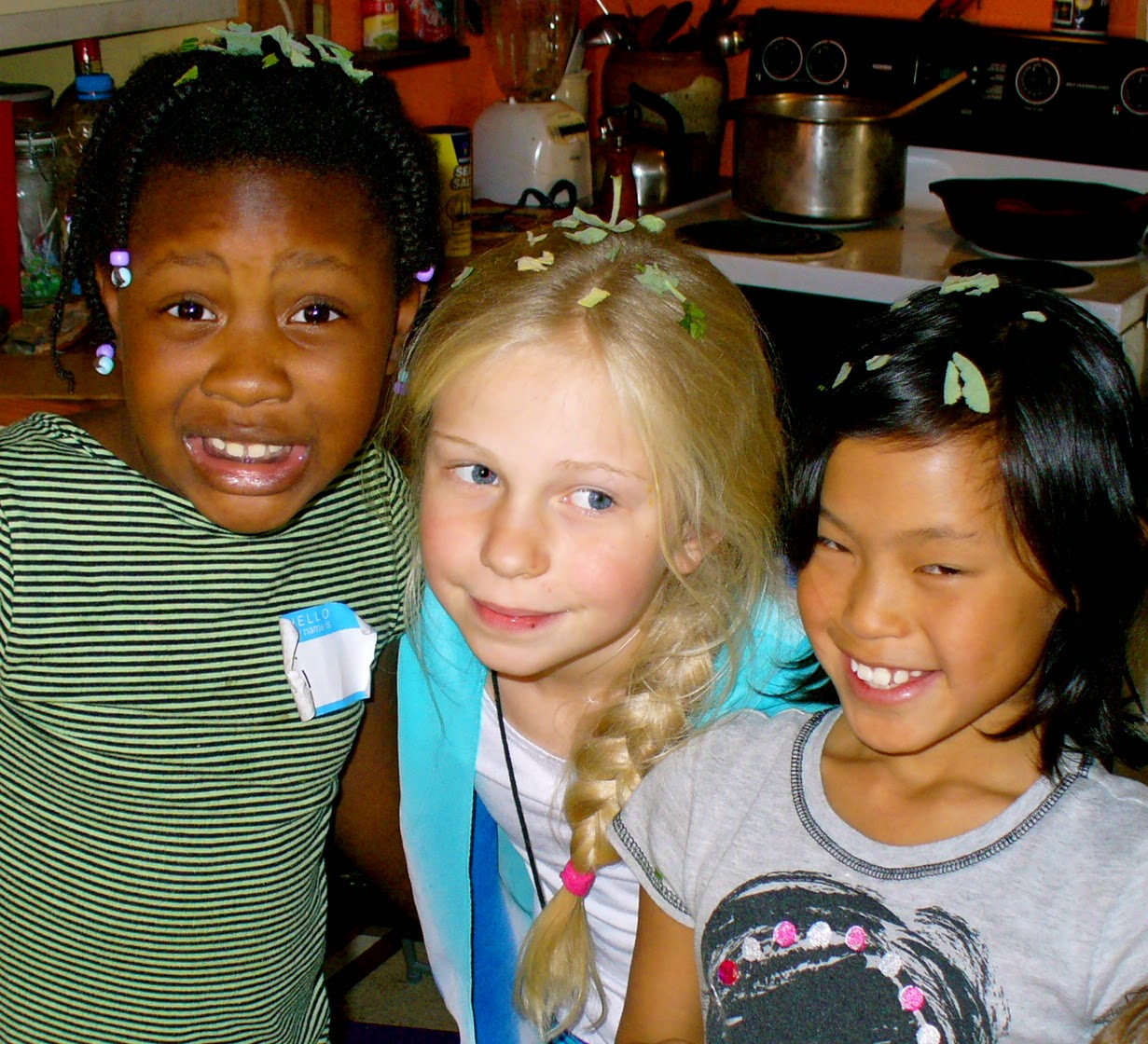 |
| Mehregan 2014: We talked about what friendship means, then my students had fun sprinkling herbs on each other's heads. |
Zoroastrianism took hold in Persia in around 1400 BCE and Mehr was reduced from a God to an angel, but the festival of Mehregan remained, and is now celebrated as a day of thanksgiving, usually on October 1st; people decorate their houses, put on new clothes, and visit their relatives and friends, wishing each other a good harvest, long life, and happiness.
Zoroastrians in Iran and India have a community feast today, with a large pot of noodle stew called âsh-e. The stew is always prepared by everyone together because the Avesta (the Zoroastrian holy book) says that each should bring whatever they can afford- meat, vegetables, lentils, grain, or firewood.
I'm not celebrating Mehregan today, but I've reposted last year's post here:
Agenda Today:
1. Journal:
Today I like to focus my thoughts on how well I honor the promises and commitments of friendship.
In what condition are my friendships? How might I be a better friend?
List the friends that I want to nurture and pay special attention to this month, those I feel distant from or whom I want to understand better and appreciate more.
2. Make soup:
Aash-e-Reshte, a delicious, rich noodle soup, is the meal normally served on this occasion.
Part of the fun when we make this soup is the anticipation- I ask my students to each bring a few of the ingredients, which get taken out of backpacks after school and gathered on the table.
Each student prepares the foods they contributed- peeling carrots and potatoes, chopping spinach and parsley.
Peeling carrots for the soup.
|
- 1/2-c. dry lentils
- 1/2-c. pearl barley
- 1 bunch fresh parsley or cilantro
- 1 carrot
- 1 potato
- 1 tomato
- salt and pepper
- 1-lb. fresh spinach
- 1/2-lb linguine (or persian reshteh noodles)
- 1 can each garbanzos and red kidney beans
- 1 medium onion
- 2 Tbsp. chopped fresh mint
- 1 tsp. turmeric
- 1 c. plain yogurt
(Yield: 8-10 servings)
1- Pick over and rinse the dried lentils. Cover with 2 c. water and simmer for about 45 minutes, stirring occasionally. Cook the barley in another pot, covered with water, for about 30 minutes.
2- Meanwhile, clean the parsley and chop finely. Put into a soup pot with 6 c. water. Peel and chop carrot, potato & tomato. Add with salt and pepper. Simmer 20 minutes.
3- Clean and chop the spinach and add to the soup pot. Break the noodles into 2-inch pieces and add to the pot. Simmer until noodles are cooked.
3- Clean and chop the spinach and add to the soup pot. Break the noodles into 2-inch pieces and add to the pot. Simmer until noodles are cooked.

4- Slice the onions and fry in a little oil until they turn golden brown. Add the mint and turmeric, stir, and set aside.
5- When the noodles are cooked, add lentils, beans, barley, and onions to the soup pot; simmer for 10-15 minutes. Taste for seasoning. Place âsh-e in bowls and stir in yogurt.
3. Ceremony:
Zoroastrians set a very elaborate table display for this celebration. I don’t even try to duplicate it, but I do try to include these Zoroastrian symbols:
- Mirror – symbolizing Sky
- Apple – symbolizing Earth
- Candles – symbolizing Fire
- Rose water – symbolizing Water
- Seeds (such as peas, beans, and lentils) – symbolizing last year's harvest and next year's plan.
We gathered around the table, lit the candles, and had a moment of silent prayer, to review and rededicate promises we have made to our families and friends. Then we had fun tearing up sage and lavendar leaves to sprinkle on each other’s heads, to wish everyone good health and happy life.
And then we ate our soup! (We put the pot down for Sadie, because Zoroastrians revere dogs and always make sure they get soup on this day.)




No comments:
Post a Comment